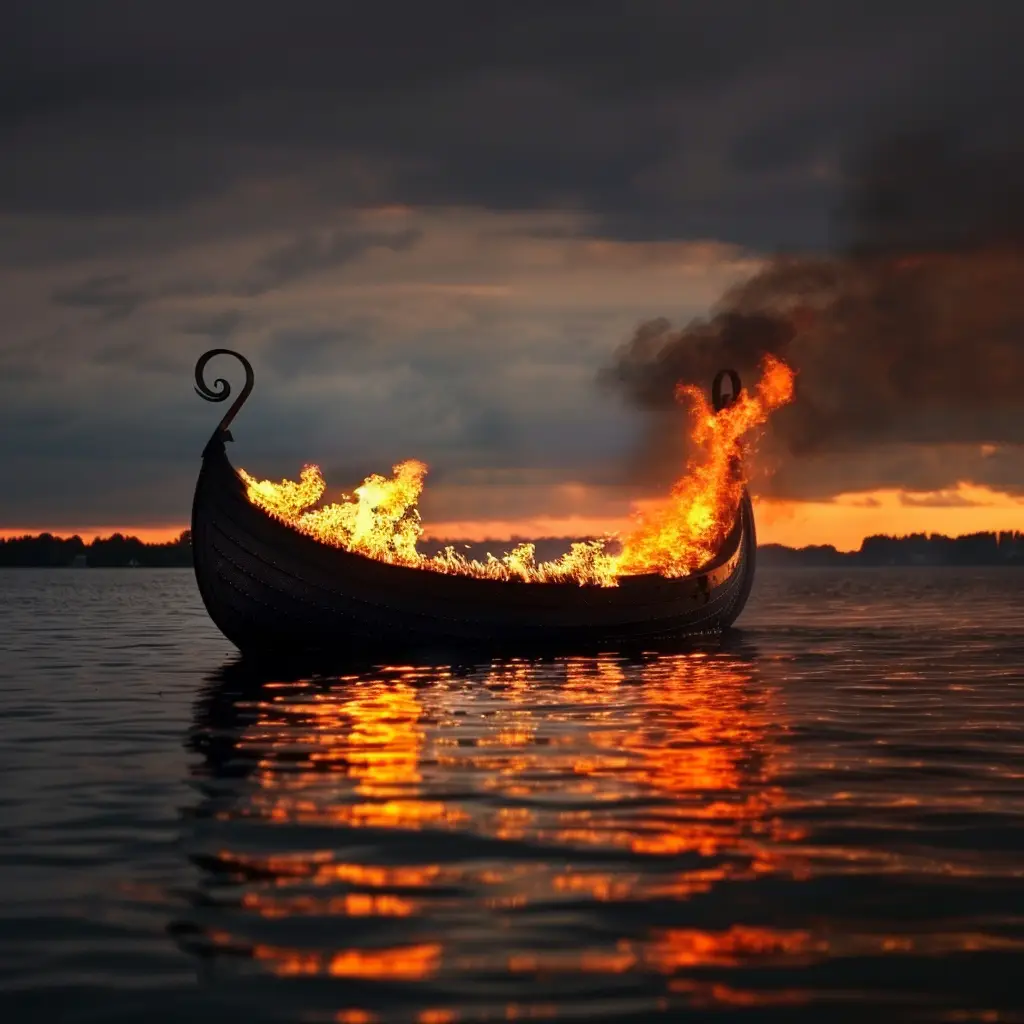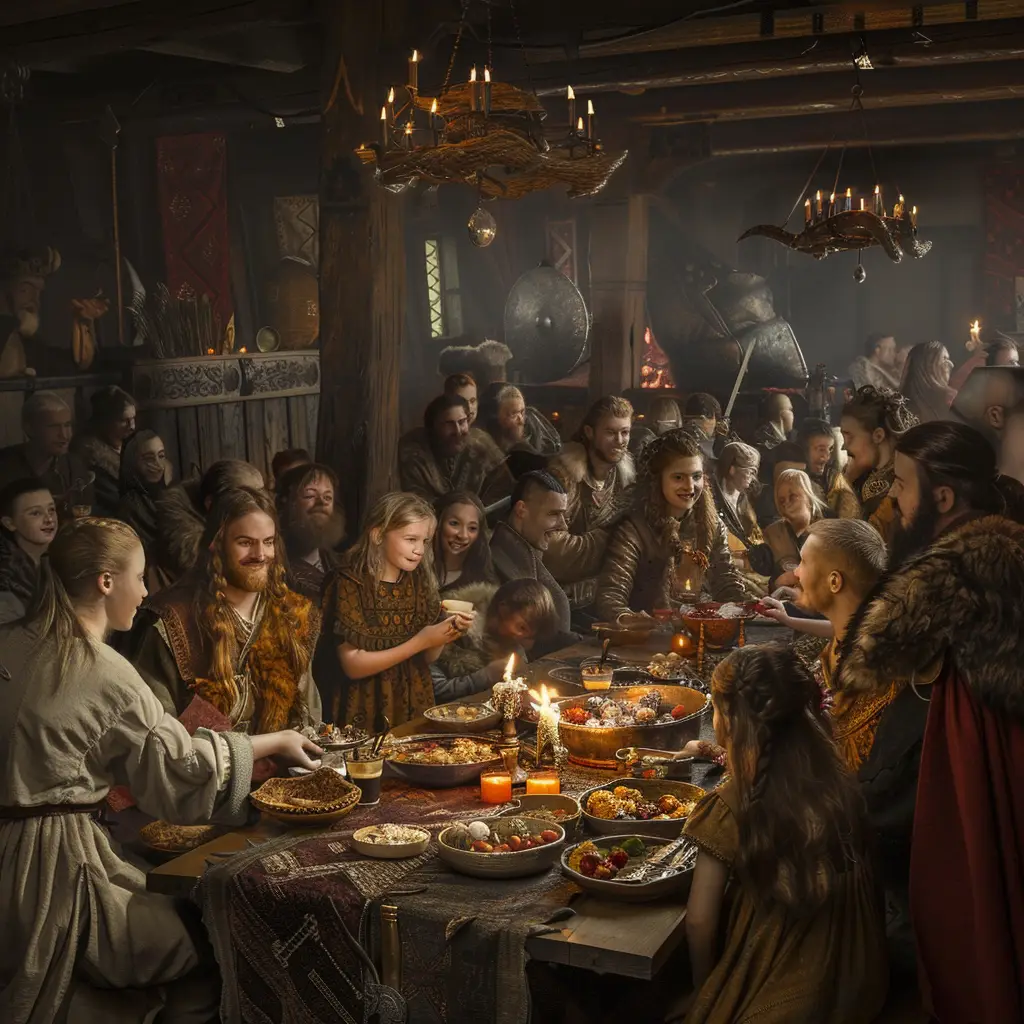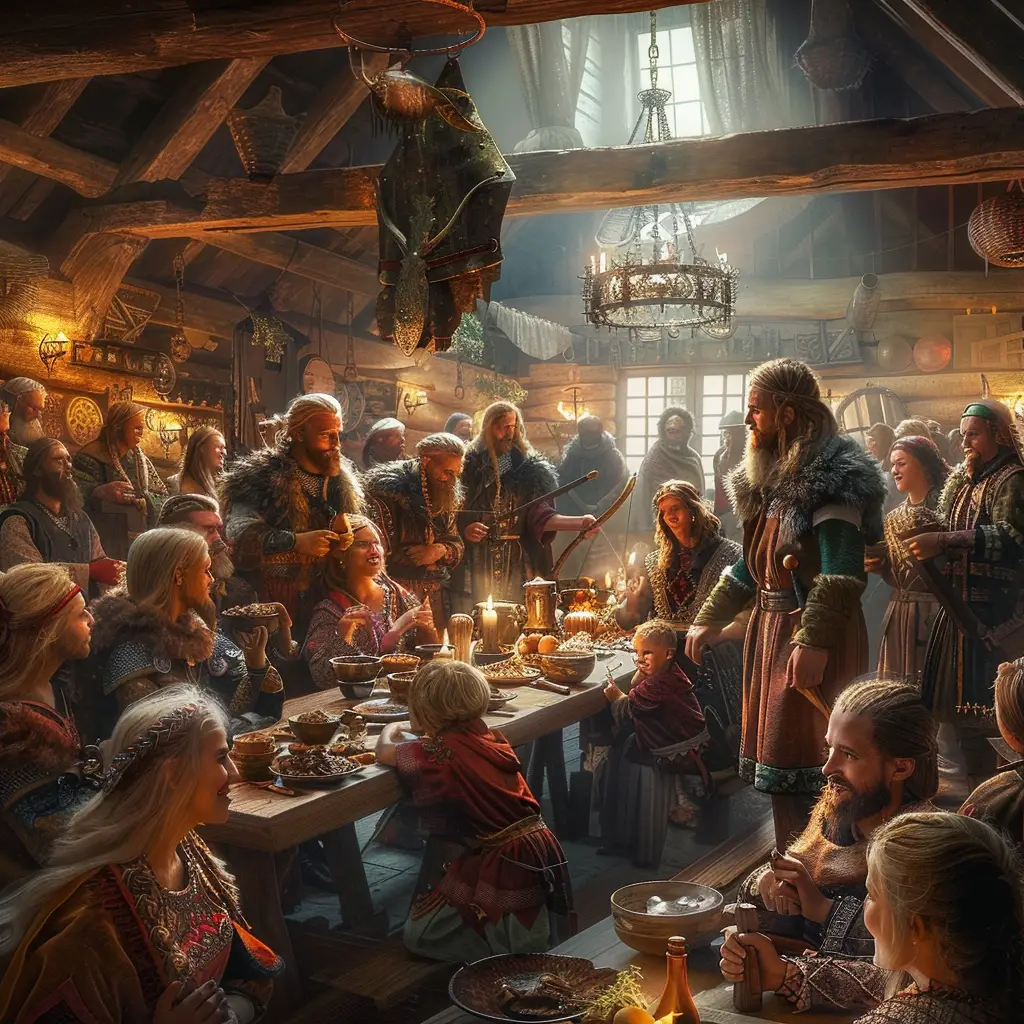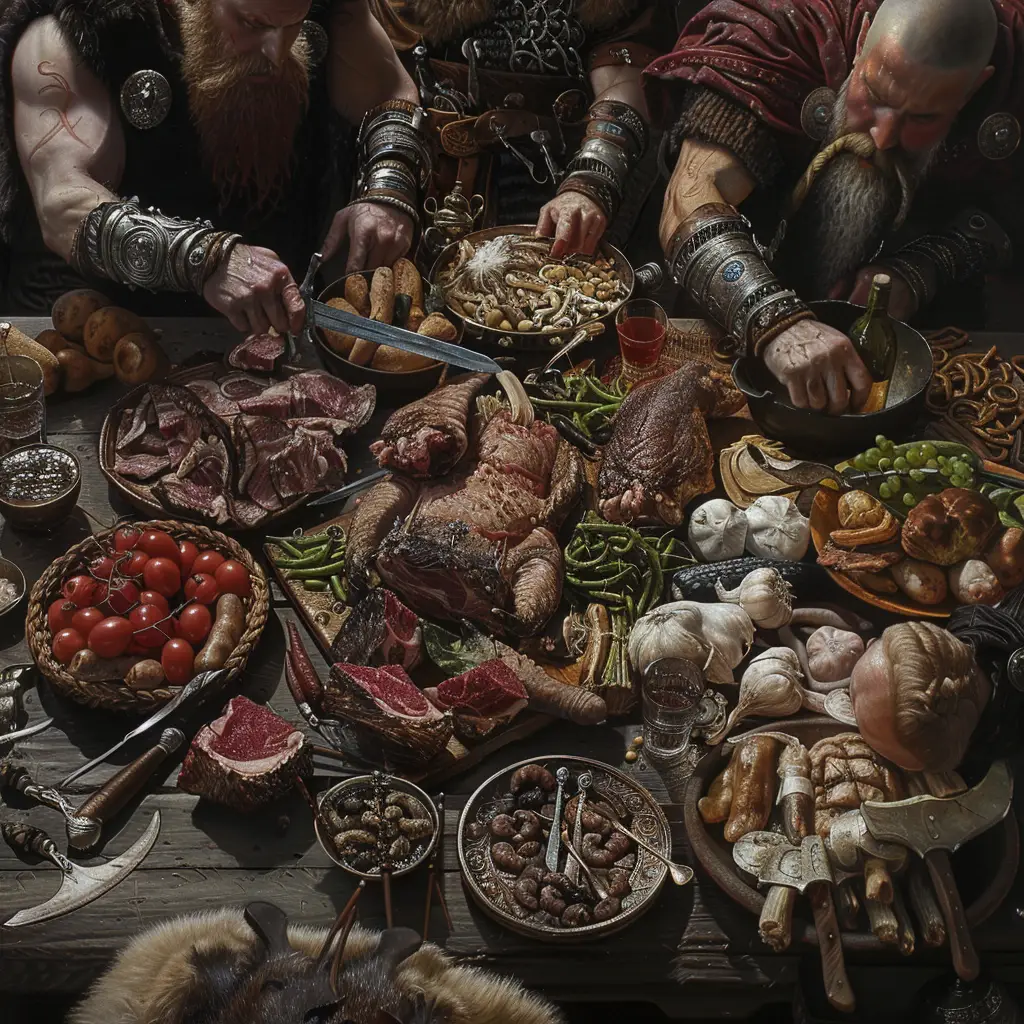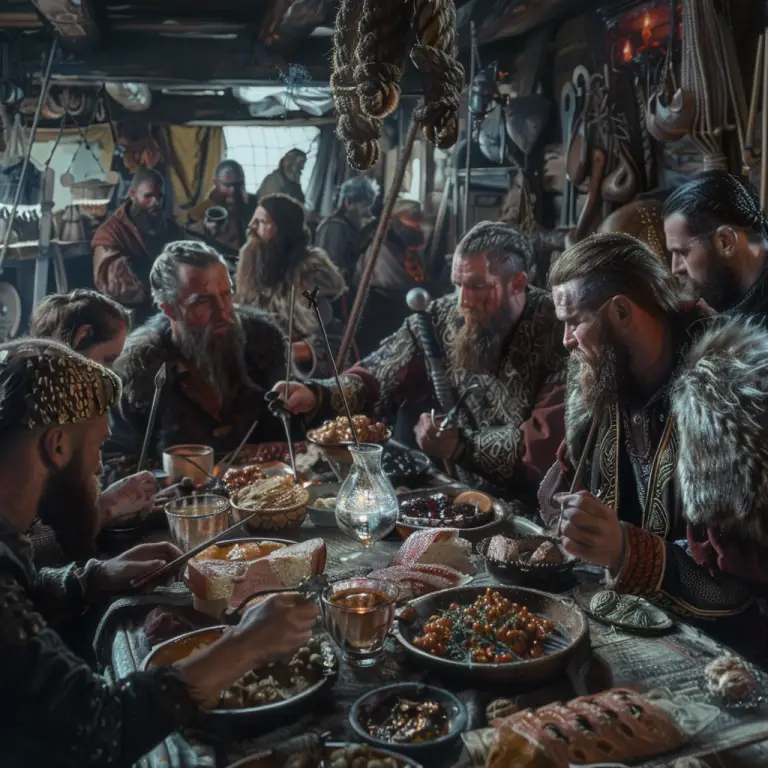Viking feasts and celebrations were integral to Norse culture, serving as important social, religious, and political events. These gatherings were marked by communal meals, toasts, storytelling, music, and various forms of entertainment. Here are some key aspects of Viking feasts and celebrations:
Types of Celebrations
Blót:
Religious Sacrifices: Blóts were religious sacrifices made to the gods, spirits, and ancestors. These rituals were conducted to ensure good fortune, harvests, and victories in battles. They involved the slaughter of animals, whose blood was collected and used in rituals, while the meat was cooked and shared in a communal feast.
Seasonal Blóts: Major blóts occurred during significant seasonal transitions, such as Yule (midwinter), Dísablót (for the female spirits or dísir), and Alfablot (honouring the elves and ancestors).
Yule (Jól):
Winter Solstice: Celebrated around the winter solstice, Yule was a festival that marked the rebirth of the sun and the start of the new year. It involved feasting, drinking, and toasting to the gods and ancestors.
Twelve Days: Yule festivities could last for several days, sometimes up to twelve, filled with various rituals, gift-giving, and merrymaking.
Wedding Feasts:
Community Events: Viking weddings were grand affairs that involved the entire community. They featured elaborate feasts with abundant food and drink, toasts to the bride and groom, and entertainment.
Symbolic Rituals: Rituals such as the exchange of swords and keys symbolized the union and responsibilities of the couple.
Funeral Feasts:
Honouring the Dead: Funerals were significant events that involved feasting to honor the deceased. These gatherings included toasts, the recitation of the deceased’s deeds, and rituals to ensure their journey to the afterlife.
Ship Burials: In some cases, high-status individuals were given ship burials, which included a ceremonial feast.
Elements of Viking Feasts
Food and Drink:
Meat and Fish: Feasts featured a variety of meats, including pork, beef, mutton, and poultry, as well as fish and seafood.
Bread and Grains: Bread, porridge, and other grain-based dishes were common.
Mead and Ale: Alcoholic beverages, particularly mead (made from fermented honey) and ale, were central to Viking feasts. Drinking horns and cups were used for toasting and communal drinking.
Toasting (Sumbel):
Sacred Toasts: Toasting was an important ritual during feasts, often involving three main rounds. The first toast was to the gods, the second to the ancestors, and the third to the king or chieftain. Each toast was accompanied by specific rituals and words of honour.
Entertainment:
Skalds and Storytelling: Skalds (poets) played a vital role in reciting sagas, poems, and heroic tales. Their performances were highly valued and entertained the guests while preserving cultural stories and values.
Music and Dance: Musical instruments like harps, lyres, and drums accompanied songs and dances. These added to the festive atmosphere and provided enjoyment for all attendees.
Games and Competitions:
Physical Contests: Feasts often included various games and competitions, such as wrestling, archery, and other tests of strength and skill.
Board Games: Games like hnefatafl (a strategic board game similar to chess) were popular during these gatherings.
Cultural Significance
Social Cohesion: Feasts and celebrations reinforced social bonds and hierarchy within the Viking community. They provided opportunities for political alliances, marriage negotiations, and the display of wealth and generosity.
Religious Devotion: These events were occasions to honour the gods and seek their favour, ensuring the community’s prosperity and protection.
Cultural Transmission: Through storytelling, music, and rituals, Viking feasts preserved and transmitted cultural knowledge, values, and traditions to future generations.
